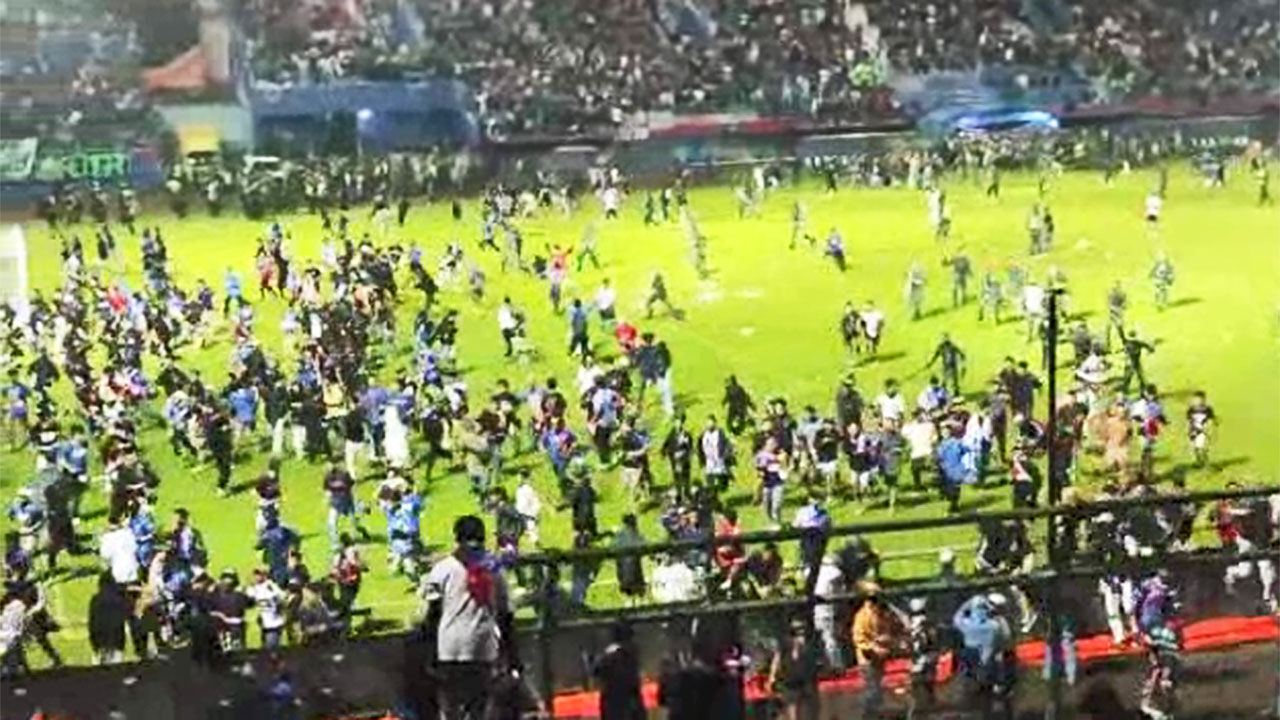<Anchor>
Hundreds of people were killed or injured in the process of police suppression of a riot at an Indonesian professional soccer stadium.
While there is confusion in determining the number of deaths and handling accidents, some are pointing out that excessive police suppression caused a disaster.
Correspondent Won Jong-jin.
<Reporter>
A player who is being dragged around surrounded by excited spectators is evacuated to the bench by the police.
Local time Gjet (1st) night.
Thousands of spectators stormed the stadium shortly after a professional football match in Malangsi, eastern Indonesia.
When the home team lost the game, excited home fans poured out to protest.
As the police fired tear gas and dispersed the stadium, the stadium quickly turned into chaos, and hundreds of people tangled up as spectators rushed to one or two narrow exits to escape.
[Nico Avinta / Chief of Police in Java, Indonesia: 34 people died on the spot, and the others died while receiving treatment at the hospital.]
Indonesian authorities, who had initially announced that the death toll had reached 174, said that there was a double count and said the number of fatalities was doubled. Changed to 125 people.
However, there are concerns that more than 100 people were injured and there are many serious injuries, so the number of victims may increase.
Because of the enthusiastic football cheering culture in Indonesia, even before this accident, the death toll from stadium riots alone reached 78.
The stadium where the game was held had a capacity of 38,000, but it was confirmed that more than 42,000 tickets were sold.
The Indonesian Football Association has suspended league matches for one week, and the Indonesian government has started to check the safety of the soccer field.
Some critics point out that excessive police suppression caused a large-scale disaster.
FIFA bans the use of guns and tear gas in the stadium to prevent crushing and entangled crowds.

